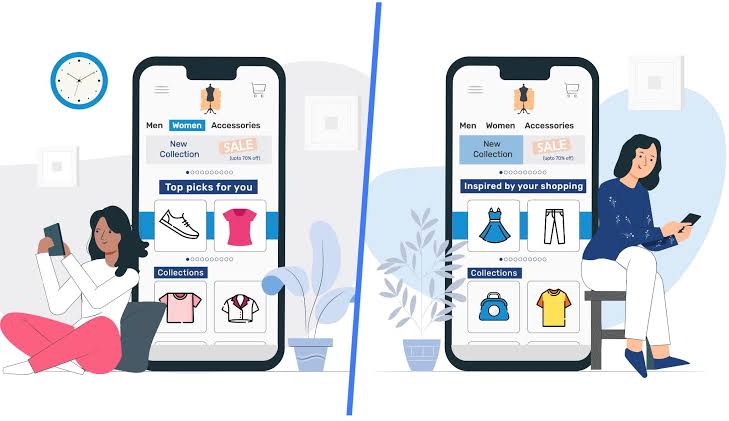
Boost Customer Engagement With Effective E-Commerce Personalisation
Learn how E-Commerce Personalisation enhances customer experience, boosts sales, and improves conversion rates. Explore top strategies for successful implementation.
Table of Contents
- Introduction: How E-Commerce Personalisation is Changing the Shopping Experience
- What is E-Commerce Personalisation?
- Key Benefits of Tailored Online Shopping Experiences
- How to Implement E-Commerce Personalisation
- Best Practices for Enhancing Customer Engagement
- Conclusion: Future-Proof Your Business with E-Commerce Personalisation
How E-Commerce Personalisation Is Changing The Shopping Experience

In the ever-evolving world of online shopping, customers are looking for more than just products—they want an experience tailored to their needs and preferences. E-Commerce Personalisation is the key to delivering a shopping experience that feels personal, intuitive, and engaging. When implemented effectively, E-Commerce Personalisation not only improves customer satisfaction but also drives higher conversion rates and sales.
In this blog, we’ll dive into the concept of E-Commerce Personalisation, why it’s essential for your online store, and how you can leverage it to stay competitive in today’s market.
What Is E-Commerce Personalisation?
E-Commerce Personalisation refers to the practice of using customer data to provide tailored experiences, product recommendations, and promotions that match an individual’s preferences, behaviour, and past interactions. Whether it’s showing personalised product suggestions or sending targeted emails, E-Commerce Personalisation aims to create a unique and engaging experience for every customer.
By utilising customer data, such as browsing history, purchase behaviour, and demographic information, businesses can create customised experiences that drive sales and enhance the shopping journey. This is where the real power of E-Commerce Personalisation lies—turning every shopper into a loyal customer by offering them exactly what they need.
Key Benefits Of Tailored Online Shopping Experiences
The advantages of E-Commerce Personalisation are clear. Implementing personalised strategies can significantly improve customer engagement and drive higher sales. Let’s explore the key benefits of E-Commerce Personalisation:
- Improved Customer Experience: Personalisation allows you to provide a shopping experience that resonates with each customer’s preferences, which makes them feel valued and understood. When customers see personalised product recommendations or content that speaks to their interests, they are more likely to return.
- Higher Conversion Rates: By showing customers products that align with their past purchases or browsing history, you increase the likelihood of conversions. E-Commerce Personalisation plays a key role in reducing cart abandonment and increasing the chances of completing a sale.
- Increased Customer Retention: E-Commerce Personalisation helps build long-term relationships with your customers. By offering tailored content, special offers, and recommendations, you make customers feel appreciated, fostering loyalty that leads to repeat purchases.
- Boost in Average Order Value: Personalised recommendations based on a customer’s preferences can lead to upselling and cross-selling, ultimately increasing the average order value (AOV). When customers are shown complementary or related products, they are more likely to add them to their cart.
How To Implement E-Commerce Personalisation?
The key to successful E-Commerce Personalisation lies in strategically leveraging customer data and technology. Here are some steps you can take to start implementing E-Commerce Personalisation for your online store:
a) Leverage Customer Data for Personalisation
Collecting and analysing customer data is at the heart of E-Commerce Personalisation. By tracking browsing history, purchase behavior, and engagement patterns, you can gain valuable insights into what your customers like and need. Use this data to create personalised product recommendations, tailored emails, and customised offers.
b) Personalised Product Recommendations
One of the most effective ways to implement E-Commerce Personalisation is through personalised product recommendations. By using algorithms that analyse customer data, you can suggest products that align with a customer’s preferences. This type of recommendation not only enhances the shopping experience but also increases the likelihood of additional purchases.
c) Targeted Emails and Offers
Email marketing is another powerful tool for E-Commerce Personalisation. Sending personalised emails based on customer behaviour can increase engagement and conversions. For example, if a customer abandons their cart, sending them a personalised reminder with an additional discount can encourage them to complete the purchase.
d) Dynamic Content and Landing Pages
Personalised content goes beyond product recommendations. You can also create dynamic landing pages that are tailored to different customer segments. For example, if you have a group of returning customers, offer them exclusive deals or highlight new arrivals based on their previous purchases.
Best Practices For Enhancing Customer Engagement
While implementing E-Commerce Personalisation can yield significant benefits, there are some best practices to follow to ensure success:
a) Don’t Overwhelm Your Customers
It’s important to find the right balance between personalisation and overwhelm. Too many personalised suggestions or offers can be counterproductive and may confuse or frustrate the customer. Make sure the recommendations are relevant and not overwhelming.
b) Prioritise Data Privacy and Transparency
Customer trust is essential when implementing E-Commerce Personalisation. Always be transparent about the data you collect and how it’s used. Make sure customers have control over their data and can opt out of personalised offers if they choose.
c) Use AI and Machine Learning
Incorporating AI and machine learning can take E-Commerce Personalisation to the next level. These technologies can analyse large volumes of customer data in real time, providing even more accurate and personalised experiences.
d) A/B Testing for Optimisation
Testing is key to refining your personalised strategies. Use A/B testing to measure the effectiveness of different personalisation tactics. By experimenting with different approaches, you can identify what works best and continuously optimise your strategies for better results.
Conclusion: Future-Proof Your Business With E-Commerce Personalisation
To stay competitive in today’s crowded online marketplace, embracing E-Commerce Personalisation is no longer optional—it’s a necessity. By leveraging customer data and offering tailored experiences, businesses can improve customer satisfaction, increase conversions, and boost sales.
If you’re ready to implement E-Commerce Personalisation and transform your online store, start by collecting and analysing customer data, offering personalised recommendations, and creating tailored content. With the right strategies in place, you can build stronger customer relationships and unlock the full potential of your e-commerce business.





